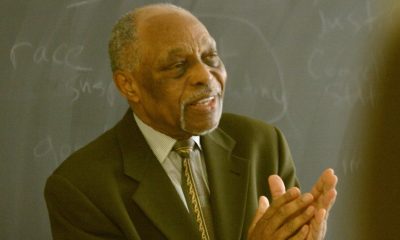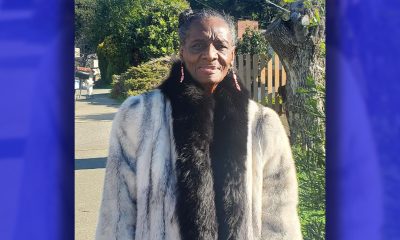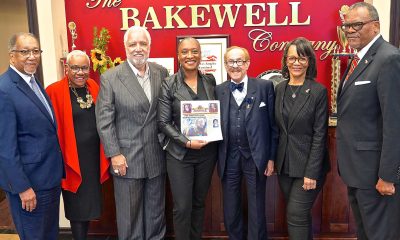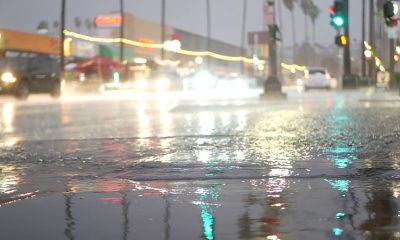Commentary
COMMENTARY: What More Can Be Done Under ESSA to Support Highly Qualified Teachers
NNPA NEWSWIRE — Teacher concerns transformed into organized protests when, in early 2018, the West Virginia teacher’s strike made headlines, lasting over 2 weeks. Local education activists and teacher advocates forced the state legislature to address many of their concerns through the statewide strike. Afterwards, teachers returned to their classrooms with a 5 percent pay raise.
By Akil Wilson
As of Monday January 14th the country’s 2nd largest public school system was being paralyzed by a teachers strike. The Los Angeles Sentinel reported that the walkout was followed by a plunge in student attendance, with about 144,000 students out of more than 600,000 students. On Tuesday that number grew to 159,000 students without instruction. This work stoppage was the latest in what has become a wave of similar protests in our nation’s public school systems.
Teacher concerns transformed into organized protests when, in early 2018, the West Virginia teacher’s strike made headlines, lasting over 2 weeks. Local education activists and teacher advocates forced the state legislature to address many of their concerns through the statewide strike. Afterwards, teachers returned to their classrooms with a 5 percent pay raise.
The strike lead to similar actions in several other school districts across the country including Oklahoma, Arizona, Kentucky and North Carolina.
Teacher grievances in Los Angeles echo the concerns of teachers in many school districts nationwide. Among their demands are smaller class sizes, an increase in support staff and higher pay.
The Los Angeles Unified School District is overwhelmingly comprised of low-income students, with over 80% of its students qualifying for free or reduced lunch.
Within this immense school system of 900 schools and roughly 30,000 teachers, classroom sizes can often exceed 32 students per teacher at the elementary level and up to 39 students per teacher for middle and high school. This student-to-teacher ratio greatly exceeds the 16 to 28 students per teacher national averages in urban school districts, according to the National Teacher and Principal Survey of 2015-16.
One of the Every Student Succeeds Act’s (ESSA) primary mandates involves building systems of support for educators through the use of additional funding and initiatives provided in Title II.
Title II funds purpose to support class size reduction, encourage performance-based pay for effective educators and develop opportunities to improve overall school conditions. In addition to funding, ESSA will enable school systems to attempt to address the shortage in classroom instructors by shifting the emphasis for teacher evaluations away from student standardized test performance — a point of stress for many educators.
Thus far, the Los Angeles Unified School District has offered a 6% pay increase as well as a classroom cap size of 35 for elementary schools and 39 for high school English and Math courses. However, in a school district as massive as Los Angeles, support staff is also vital.
Teachers in Los Angeles are also demanding that something is done to address the current state of affairs, which allows a workload of over 500 students per guidance counselor and over 2,000 students per nurse in the county. The school district has promised to address these concerns by offering one additional academic counselor per high school in the district and ensuring that each elementary school has daily nursing services.
If you are in Los Angeles or a similarly affected school district, learn more about ESSA’s impact on Title II and find out how your State Education Agency (SEA) and Local Education Agency (LEA) can support the extremely important work our educators are doing to advance our students’ success.
Akil Wilson is a Washington, DC-based podcaster and parent. He is a contributing writer for the Washington Informer in addition to providing broadcast commentary for a variety of media outlets.
Activism
Oakland Post: Week of April 24 – 30, 2024
The printed Weekly Edition of the Oakland Post: Week of April 24 – 30, 2024

To enlarge your view of this issue, use the slider, magnifying glass icon or full page icon in the lower right corner of the browser window. ![]()
Activism
Oakland Post: Week of April 17 – 23, 2024
The printed Weekly Edition of the Oakland Post: Week of April 17 – 23, 2024

To enlarge your view of this issue, use the slider, magnifying glass icon or full page icon in the lower right corner of the browser window. ![]()
Commentary
Opinion: Surviving the Earthquake, an Eclipse and “Emil Amok.”
Last Friday, a 4.8 magnitude earthquake shook New York City, reported as the “biggest earthquake with an epicenter in the NYC area since 1884” when a 5.2 quake hit. A bit bigger. The last quake similar to Friday’s was a 4.9 in 1783.Alexander Hamilton felt it — 241 years ago. That’s why New Yorkers were freaking out on Friday. They were in the room where it happens.

By Emil Guillermo
I’m a Northern Californian in New York City for the next few weeks, doing my one-man show, “Emil Amok, Lost NPR Host, Wiley Filipino, Vegan Transdad.”
I must like performing in the wake of Mother Nature.
Last Friday, a 4.8 magnitude earthquake shook New York City, reported as the “biggest earthquake with an epicenter in the NYC area since 1884” when a 5.2 quake hit. A bit bigger. The last quake similar to Friday’s was a 4.9 in 1783.
Alexander Hamilton felt it — 241 years ago.
That’s why New Yorkers were freaking out on Friday. They were in the room where it happens.
And it just doesn’t happen that often.
Beyonce singing country music happens more frequently.
When I felt New York shake last week, it reminded me of a time in a San Francisco TV newsroom when editors fretted about a lack of news an hour before showtime.
Then the office carpeting moved for a good ten seconds, and the news gods gave us our lead story.
On Friday when it happened in NYC, I noticed the lines in the carpeting in my room wiggling. But I thought it was from a raucous hotel worker vacuuming nearby.
I didn’t even think earthquake. In New York?
I just went about my business as if nothing had happened. After living near fault lines all my life, I was taking things for granted.
Considering the age of structures in New York, I should have been even more concerned about falling objects inside (shelves, stuff on walls) and outside buildings (signs, scaffolding), fire hazards from possible gas leaks, and then I should have looked for others on my floor and in the hotel lobby to confirm or aid or tell stories.
Of course, as a Californian who has lived through and covered quakes in the 4 to 6 magnitude range, I tried to calm down any traumatized New Yorker I encountered by taking full responsibility for bringing in the quake from the Bay Area.
I reassured them things would be all right, and then let them know that 4.8s are nothing.
And then I invited them to my consoling post-Earthquake performance of “Emil Amok, Lost NPR Host…”
It was the night of the eclipse.
ECLIPSING THE ECLIPSE
In New York City, the eclipse was about 90 percent visible. Good enough for me. Though a full solar eclipse is a celestial rarity, blockages of any sort aren’t generally celebrated. My one-man play is about growing up with the eclipsed history of American Filipinos and how I struggle to unblock all that.
For example, did you know the first Filipinos actually arrived to what is now California in 1587? That’s 33 years before the Pilgrims arrived in America on the other coast, but few know the Filipino history which has been totally eclipsed.
I was in Battery Park sitting on a bench and there was a sense of community as people all came to look up. A young woman sitting next to me had a filter for a cell phone camera. We began talking and she let me use it. That filter enabled me to take a picture of the main event with my iPhone.
For helping me see, I invited her and her boyfriend to come see my show.
Coincidentally, she was from Plymouth, Massachusetts, near the rock that says the year the Pilgrims landed in 1620.
In my show she learned the truth. The Pilgrims were second.
History unblocked. But it took a solar eclipse.
Next one in 2044? We have a lot more unblocking to do.
If you’re in New York come see my show, Sat. April 13th, 5:20 pm Eastern; Fri. April 19, 8:10 pm Eastern; and Sun. April 21st 5:20 pm Eastern.
You can also livestream the show. Get tickets at www.amok.com/tickets
About the Author
Emil Guillermo is a journalist and commentator. He does a mini-talk show on YouTube.com/@emilamok1. He wishes all his readers a Happy Easter!
-

 Community2 weeks ago
Community2 weeks agoFinancial Assistance Bill for Descendants of Enslaved Persons to Help Them Purchase, Own, or Maintain a Home
-

 Activism3 weeks ago
Activism3 weeks agoOakland Post: Week of April 3 – 6, 2024
-

 Business2 weeks ago
Business2 weeks agoV.P. Kamala Harris: Americans With Criminal Records Will Soon Be Eligible for SBA Loans
-

 Activism2 weeks ago
Activism2 weeks agoOakland Post: Week of April 10 – 16, 2024
-

 Community2 weeks ago
Community2 weeks agoAG Bonta Says Oakland School Leaders Should Comply with State Laws to Avoid ‘Disparate Harm’ When Closing or Merging Schools
-

 Community1 week ago
Community1 week agoOakland WNBA Player to be Inducted Into Hall of Fame
-

 Community1 week ago
Community1 week agoRichmond Nonprofit Helps Ex-Felons Get Back on Their Feet
-
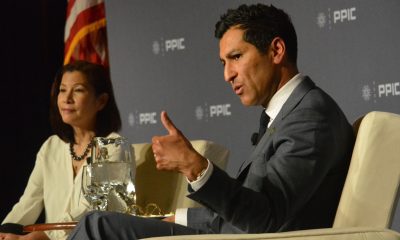
 Community2 weeks ago
Community2 weeks agoThe Year Ahead: Assembly Speaker Rivas Discusses Priorities, Problems

